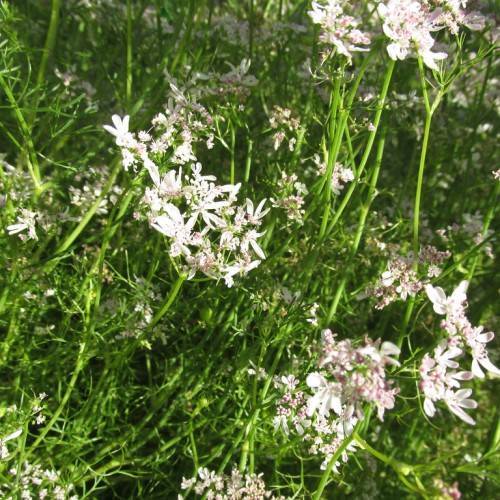
cilantro
Coriandrum sativum
Also Known As - coriander,Chinese parsleyCycle:
Annual
Watering:
Average
Hardiness Zone:
2 - 11
Flowers:
Flowers
Sun:
Full sun,part shade
Soil:
Well-drained
Fruits:
Fruits Ready In
Leaf:
Yes
Growth Rate:
High
Maintenance:
Low
watering
Cilantro (Coriandrum sativum) requires regular watering to remain healthy and thrive. Water your cilantro about once a week, or whenever the top 1-2 inches of soil are dry. Water thoroughly, until water pours out the drainage holes in the bottom of the pot. Allow the soil to dry out slightly between waterings, and if in doubt, under-water rather than overwater. In hot, dry weather, cilantro may need to be watered more frequently.
sunlight
Cilantro (Coriandrum sativum) plants prefer full sunlight and enjoy warm temperatures. Ideally, cilantro plants should receive full sun for 8-10 hours per day. When the temperatures rise above 86-95°F (30-35°C), the plants should be shaded to keep them from wilting. Cilantro plants do not like direct afternoon sunlight and should be placed in a location that receives sun in the morning and filtered or partial sunlight in the afternoon. Additionally, cilantro plants should be protected from strong winds which can cause the delicate foliage to dry out and curl.
pruning
Cilantro (Coriandrum sativum) is best pruned just as the plant begins to flower. This usually occurs 2-3 months after planting and should be done by trimming the stem just above the uppermost leaf set. Pruning in this way promotes bushier growth and increased leaf production, which cilantro is known for. You should be sure to regularly prune your cilantro to keep the plant vigorous and healthy. Aim to remove 1/3 of the foliage from the plant each time you prune. If too many flowers become visible, you may want to reduce the amount of pruning to keep the plant from going into seed production.
